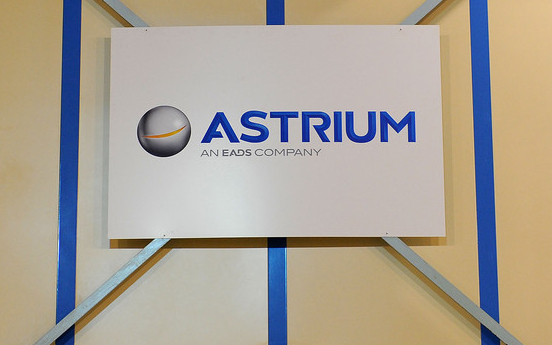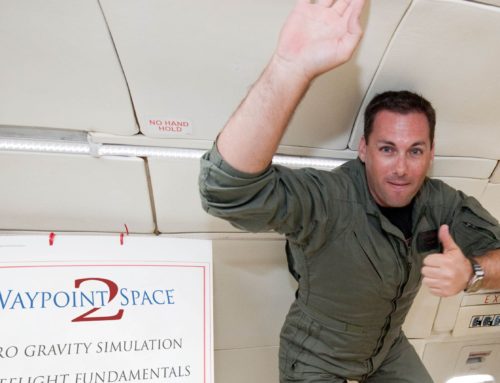“Gravity,” in which satellite debris sets astronauts Sandra Bullock and George Clooney adrift in space, turned into a blockbuster for Warner Bros. Astrium wants real-life spatial waste to do the same for the company.
The European satellite and rocket maker can — together with the region’s space agencies — help clean up the cosmos, Herve Gilibert, chief technical officer of Astrium Space Transportation, said in an interview in Les Mureaux, near Paris, where the unit of Airbus-parent European Aeronautic, Defence & Space Co. assembles the lower stage of its Ariane 5 launcher.
“As you see in the Gravity movie, debris in space is becoming a real concern for us and for satellite operators,” he said. “Such debris can totally destroy anything that’s in space today: satellites, shuttles, the space station or a part of the space station.”
Astrium, which faces mounting competition in its existing businesses, can develop mono- and “multi-chaser” platforms to grab hazardous objects bigger than cars in space with robotic arms or harpoons and nets, and send them up into less crowded orbits or down to burn in the atmosphere, Gilibert said.
Space debris created by everything from defunct satellites to rocket bodies and payload parts is growing exponentially as they smash into each other, potentially threatening the lives of astronauts, disrupting telecommunications, broadcasts, and Earth observation, and may inflate the cost of insuring satellites worth several tens of million dollars for operators such as SES (SESG) SA and Eutelsat Communications SA. (ETL)
Lethal Debris
“The debris issue is most acute on low orbits, where we mainly find government satellites used for Earth observation and weather and for military applications such as imagery intelligence, as well as three commercial constellations of communications satellites like Iridium,” said Rachel Villain, a space industry analyst at Euroconsult in Paris.
Some 20,000 objects larger than a mobile phone that are currently tracked and an estimated half-a-million objects no bigger than a British pound coin that can’t be surveyed may turn lethal as they hurtle through space at a speed of more than 8 kilometers (5 miles) a second, the London-based Royal Aeronautical Society said in a statement this month.
While the “Gravity” movie is “pessimistic” because real-life operational spacecraft can make avoidance maneuvers, removing 10 large objects a year would ensure that the amount of space debris is stabilized, the British body said.
The cost of debris tracking and avoidance alone is in the tens of million euros per year, according to Astrium’s Gilibert.
Envisat Test
The collision of two satellites in 2009 generated 2,000 more pieces of debris, and the out-of-control 7-ton Envisat satellite, owned by the European Space Agency, is another disaster waiting to happen over our heads, he said.
“The first mission we need to accomplish around 2020, before 2025, is the Envisat deorbiting; it will be very painful if there’s a collision,” the Astrium executive said. “By 2025, one can imagine two to three missions per year to do a bit of cleaning, especially in the lower orbits.”
Potential customers for these missions include insurers of satellite operators, which are paying “a fortune” against accidents, and the U.S. and European armed forces for whom keeping observation and communication channels clear is “a very important issue,” Gilibert said.
“As always in the space industry, when there’s a national solution, governments will not use foreign players to remove their own debris,” said Euroconsult’s Villain. “Identifying the owners of the debris may not be a walk in the park.”
Challenges Ahead
There are signs some governments are beginning to take space-debris clearing seriously.
German satellite maker OHB AG said Nov. 13 that it signed an accord with the country’s space administration to study possible uses for a spacecraft developed by the U.S.’s Sierra Nevada Corp., including removals of decommissioned satellites.
Other barriers remain.
“In space, innovation has to be proven over a long period,” said Villain. “Debris capture is very technical, and the cost remains to be seen, while all states may not have the same perception of the risks.”
In about 20 years, debris might be destroyed using lasers, although the biggest challenge will be creating a global body to govern such operations since military operations in space are currently banned by an international treaty, Gilibert said.
Musk’s SpaceX
For Astrium, seeking out new businesses is becoming important as new rivals emerge in its current businesses.
The maker of satellites, space-cargo vehicles and nuclear ballistic missiles, which also operates communications for the public and private sectors, is bracing for the end of its contract to resupply the International Space Station.
Also, competition with new launchers such as Hawthorne, California-based Space Exploration Technologies Corp.’s Falcon 9 is intensifying. The National Aeronautics and Space Administration, or NASA, for which Astrium is developing the cargo vehicle for the Orion manned spacecraft that’s supposed to fly past the Moon, is turning to the likes of SpaceX to resupply the space station after retiring its shuttle fleet in 2011.
Headed by billionaire Elon Musk, SpaceX is “overhauling the launchers’ market a little bit, based on a low-cost offer and a robustness that it will have to demonstrate,” said Astrium’s Gilibert. “It’s displaying launch costs that are 40 percent to 70 percent lower than our costs, around $60 million for a 4-ton class satellite.”
Cheaper, Faster
India may also enter the fray of commercial satellite launchers in three to four years, challenging Europe’s Arianespace and International Launch Services, controlled by Russia’s Khrunichev, while China is excluded because of U.S. and European export rules on sensitive technologies, he said.
To help Arianespace defend its share of 50 percent to 60 percent in the 2-to-3-billion-euro annual market for commercial launches that’s open to international competition, Astrium is upgrading its Ariane 5 rocket.
The current version, which boasts 57 consecutive successful launches since its last setback, can send 10.3 metric tons of payloads in geostationary orbit at almost 36,000 kilometers above Earth. The new Ariane 5 will be able to send 12 tons for the same cost by 2017, Gilibert said.
Astrium, which had revenue of more than 5.8 billion euros last year, is also interested in buying Avio SpA’s space operations to consolidate the launchers market, he said. It’s also designing Ariane 6, a launcher that will be able to orbit a single vehicle at a price 40 percent lower than Ariane 5, the Astrium executive said.
“We’re aiming at SpaceX,” Gilibert said. “Ariane 6 should enter service in 2021. We’re trying to go faster, but it will depend a lot on budget availability.”
By: Francois de Beaupuy and Caroline Connan
To see the original article CLICK HERE


